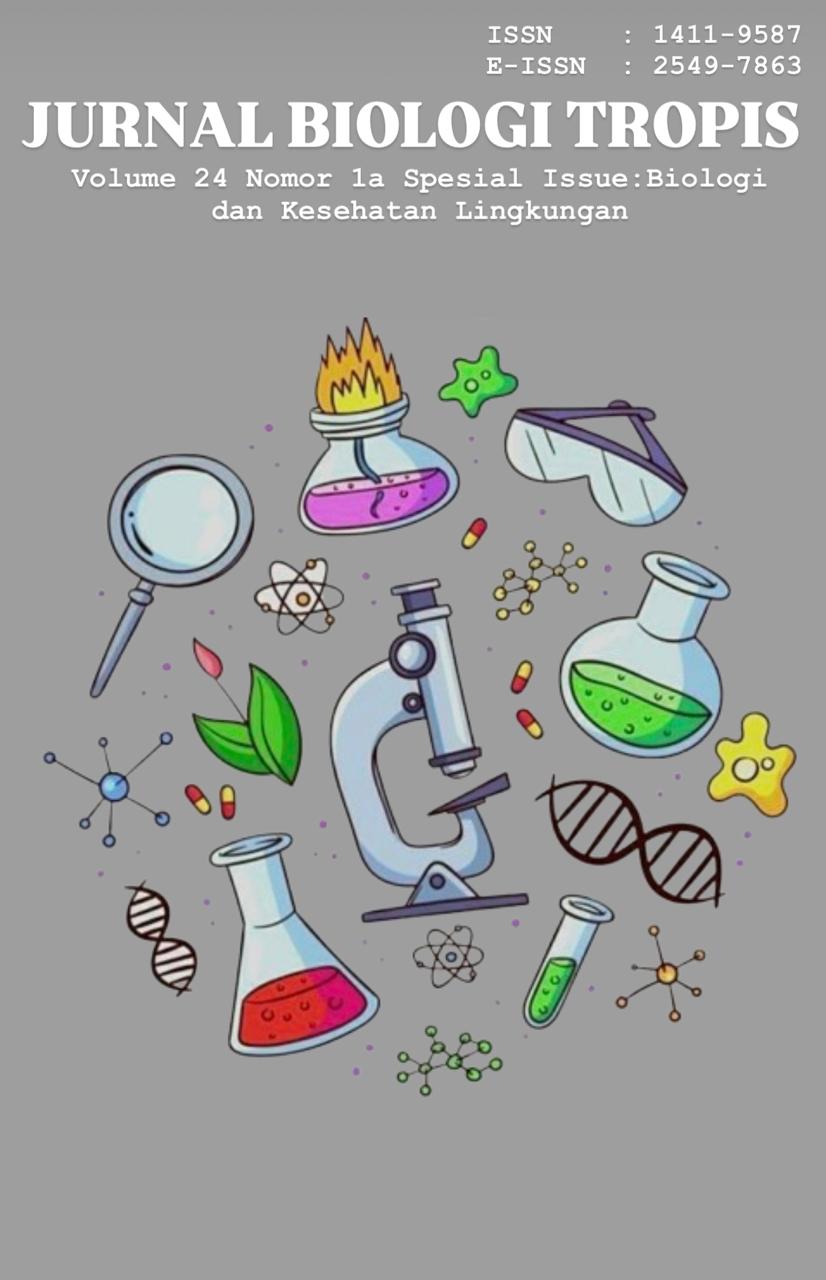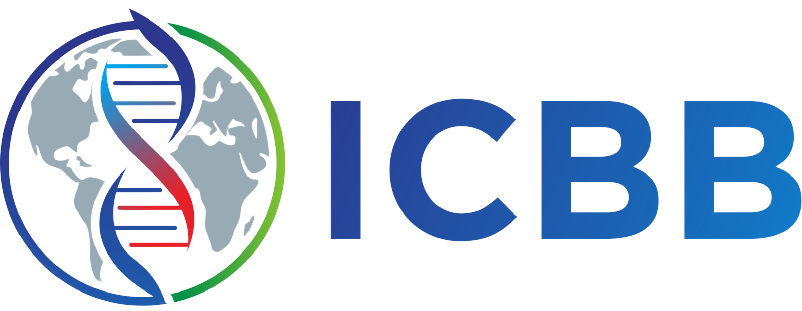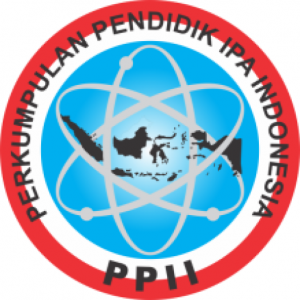Effect of Crude Extracts Fern Leaves as Biostimulants on Biomass and Nodulation of Soybean (Glycine max L.)
Authors
Arfa Iskhia Dilla , Zozy Aneloi Noli , Mansyurdin MansyurdinDOI:
10.29303/jbt.v24i1b.8122Published:
2024-12-25Issue:
Vol. 24 No. 1b (2024): Special IssueKeywords:
Biomass, biostimulant, fern, nodulation, soybean.Articles
Downloads
How to Cite
Downloads
Metrics
Abstract
Soybean (Glycine max) is a primary food commodity for the people in Indonesia, with most of its needs still dependent on imports. Efforts to increase local production require a sustainable strategy, including by use biostimulants. Natural biostimulants, such as fern leaf extract, is proven to be a solution in increasing the growth of plants. This study aims to evaluate the potential use of fern leaf extract as a biostimulant on biomass and the number of root nodules in soybean plants. The method used in this study was a factorial complete randomized design with 2 factors and 3 replications. Factor A is the source of crude extract of fern leaves, control, Gleichenia linearis, Diplazium esculentum, Nephrolepis exaltata, and Blechnum orientale. Factor B is the frequency of application extracts, namely 1 time and 2 times.The results showed that the application of Diplazium esculentum leaf extract with one application significantly increased the total number of root nodules, the number of effective root nodules and vegetative phase biomass. While in Nephrolepis exaltata with one time application can significantly increase the number of total root nodules and the number of effective root nodules. This increase is indicated by the content of bioactive compounds contained in the extract, so that it can increase the growth of soybean plants by stimulating the activity of soil microorganisms.
References
Abriz, S.F. & Golezani, K.G. (2023). Nutrient Availability Regulates Root System Behavior, pp. 96-119. John Wiley & Sons. https://doi.org/10.1002/9781119803041
Adedayo A.A & Babalola O.O. (2023) The Potential of Biostimulants on Soil Microbial Community. Frontiers, 1: 1308641. DOI: https://doi.org/10.3389/finmi.2023.1308641
Allegra, M. (2019). Antioxidant and anti-inflammatory properties of plants extract. Antioxidants, 8(11), 549. https://doi.org/10.3390/antiox8110549
Aulya, N.R., Noli, Z.A., Bakhtiar, A. &Mansyurdin, M. (2018). Effect of Plant Extracts on Growth and Yield of Maize (Zea mays L.). Pertanika Journal of Tropical Agricultural Science, 41(3): 36-41. https://doi.org/10.25077/jbioua.8.2.36-40.2020
Belyshkina, M. E., Kobozeva, T. P., Ananyeva, T. V., Popova, N. P., & Romanovskaya, A. Y. (2023, June). Biological nitrogen contribution to the increased forage value of soybean grains in the Non-Chernozem zone of Russia. In IOP Conference Series: Earth and Environmental Science (Vol. 1206, No. 1, p. 012012). IOP Publishing. http://doi.org/10.1088/17551315.
Cho, Y. B., Stutz, S. S., Jones, S. I., Wang, Y., Pelech, E. A., & Ort, D. R. (2023). Impact of pod and seed photosynthesis on seed filling and canopy carbon gain in soybean. Plant physiology, 193(2), 966-979. https://doi.org/10.1093/plphys/kiad324
Ciampitti, I. A., de Borja Reis, A. F., Córdova, S. C., Castellano, M. J., Archontoulis, S. V., Correndo, A. A., ... & Moro Rosso, L. H. (2021). Revisiting biological nitrogen fixation dynamics in soybeans. Frontiers in Plant Science, 12, 727021. https://doi.org/10.3389/fpls.2021.727021.
Drobek, M., Frąc, M., & Cybulska, J. (2019). Plant biostimulants: Importance of the quality and yield of horticultural crops and the improvement of plant tolerance to abiotic stress—A review. Agronomy, 9(6), 335. https://doi.org/10.3390/agronomy9060335
Glenn, D. M. (2016). Dry matter partitioning and photosynthetic response to biennial bearing and freeze damage in ‘Empire’apple. Scientia Horticulturae, 210, 1-5. https://doi.org/10.1016/j.scienta.2016.06.042.
Hirpara, A. B., Sapovadiya, M. H., Patel, J. B., Chauhan, K. P., & Babariya, P. A. (2020). Effect of harvesting stages on seed quality of soybean (Glycine max L.) Varieties. Journal of Pharmacognosy and Phytochemistry, 9(2), 2348-2350.
Huang, W., Ratkowsky, D. A., Hui, C., Wang, P., Su, J., & Shi, P. (2019). Leaf fresh weight versus dry weight: which is better for describing the scaling relationship between leaf biomass and leaf area for broad-leaved plants?. Forests, 10(3), 256. https://doi.org/10.3390/f10030256
Jarecki, W., Borza, I. M., Rosan, C. A., Vicas, S. I., & Domuța, C. G. (2024). Soybean Response to Seed Inoculation with Bradyrhizobium japonicum and/or Nitrogen Fertilization. Agriculture, 14(7), 1025. https://doi.org/10.3390/agriculture14071025.
de Freitas Lima, M., Eloy, N. B., de Siqueira, J. A. B., Inzé, D., Hemerly, A. S., & Ferreira, P. C. G. (2017). Molecular mechanisms of biomass increase in plants. Biotechnology Research and Innovation, 1(1), 14-25. https://doi.org/10.1016/j.biori.2017.08.001.
Lindström, K., & Mousavi, S. A. (2020). Effectiveness of nitrogen fixation in rhizobia. Microbial biotechnology, 13(5), 1314-1335. https://doi.org/10.1111/17517915.13517
Mishra, R., Tripathi, M. K., Sikarwar, R. S., Singh, Y., & Tripathi, N. (2024). Soybean (Glycine max L. Merrill): A Multipurpose Legume Shaping Our World. PLANT CELL BIOTECHNOLOGY AND MOLECULAR BIOLOGY, 25(3-4), 17-37. https://doi.org/10.56557/pcbmb/2024/v25i3-48643.
Moinuddin, A.K., Bankoti, P., Khan, F.A. & Narayan, S. (2024). Influence of Foliar Applications with Organic Sources of Nutrients on Growth and Yield of Soybean (Glycin max L.) A research review. International Journal of Research in Agronomy, 7(6):181-186. https://doi.org/10.33545/2618060X.2024.v7.i6c.869
Molata, T.R., Mosebi, P., Oluremi, O.I.A. & Molapo, S. (2021). Vegetative Biomass of Maize, Soybean, Lablab and Grazing Vetch Under Different Tillage and Mulch Practices in the Foothills Agroecological Zone of Lesotho. African Journal of Agricultural Research. 17(5): 743-749. https://doi.org/10.5897/AJAR2021.15562
Moretti, L. G., Crusciol, C. A. C., Leite, M. F. A., Momesso, L., Bossolani, J. W., Costa, O. Y. A., ... & Kuramae, E. E. (2024). Diverse bacterial consortia: key drivers of rhizosoil fertility modulating microbiome functions, plant physiology, nutrition, and soybean grain yield. Environmental Microbiome, 19(1), 50. https://doi.org/10.1186/s40793-024-00595-0
Pusat Kajian Anggaran, Badan Keahlian Sekretariat Jenderal DPR RI. (2022). Penyebab Ketergantungan Indonesia Terhadap Impor Kedelai. Budget Issue Brief, 2(3), ISSN2775-796X. https://berkas.dpr.go.id/pa3kn/analisis-tematik-apbn/public-file/bib-public-100. pdf. (Accessed on Oktober 27, 2024).
Siregar, I. A., Nofitasari, R., & Sandra, I. K. (2024). Analysis of Determinants and Factors Affecting Indonesian Soybean Imports. JIA (Jurnal Ilmiah Agribisnis): Jurnal Agribisnis dan Ilmu Sosial Ekonomi Pertanian, 9(3), 266-274. https://doi.org/10.37149/jia.v9i3.204.
Sokolovska, I.M., Mashchenko, Y.U. & Zharko, D.A. (2024). Productivity of Soybean Depending on the Predecessor and Fertilization System in the Conditions of the Steppe of Ukraine. Tavrìjsʹkij naukovij vìsnik, 2(136):142-150. DOI https://doi.org/10.32782/22260099.2024.136.2.18
Ummah, K. K., Noli, Z. A., & Bakhtiar, A. Mansyurdin.(2017). Effect of Certain Plant Crude Extracts on the Growth of Upland Rice (Oryza sativa L.). Int. J. Curr. Res. Biosci. Plant Biol, 4(9), 1-6. https://doi.org/10.20546/ijcrbp.2017.
Wang, Q., Li, S., Li, J., & Huang, D. (2024). The utilization and roles of nitrogen in plants. Forests, 15(7), 1191. https://doi.org/10.3390/f15071191
Widiastuti, E., & Latifah, E. (2016). Keragaan pertumbuhan dan biomassa varietas kedelai (Glycine Max (l)) di lahan sawah dengan aplikasi pupuk organik cair. Jurnal Ilmu Pertanian Indonesia, 21(2), 90-97. https://doi.org/10.24002/biota.v4i2.2470
Zabarna, T.A. & Chereshnyuk, V.V. (2024). Agroecological Aspects of Soybean (Glycine max L.) Cultivation in Ukraine. Agroecological journal, 1:108-116. https://doi.org/10.33730/2077-4893.1.2024.299945.
Zulfa, Z., Suliansyah, I., & Bakhtiar, A. (2017). Effect of Crude Extracts of Six Plants on Vegetative Growth of Soybean (Glycine maxMerr.). International Journal of Advances in Agricultural Science and Technology, 4(7), 1-12. https://ijaast.com/2017.v4.i7.
License
Copyright (c) 2024 Arfa Iskhia Dilla, Zozy Aneloi Noli, Mansyurdin Mansyurdin

This work is licensed under a Creative Commons Attribution 4.0 International License.

Jurnal Biologi Tropis is licensed under a Creative Commons Attribution 4.0 International License.
The copyright of the received article shall be assigned to the author as the owner of the paper. The intended copyright includes the right to publish the article in various forms (including reprints). The journal maintains the publishing rights to the published articles.
Authors are permitted to disseminate published articles by sharing the link/DOI of the article at the journal. Authors are allowed to use their articles for any legal purposes deemed necessary without written permission from the journal with an acknowledgment of initial publication to this journal.


























